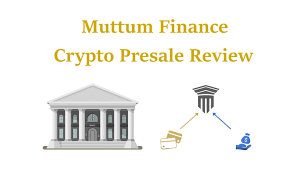- Mutuum Finance: Revolutionizing Lending and Borrowing in DeFi
- Introduction
- The decentralized finance (DeFi) ecosystem has transformed traditional financial services by eliminating intermediaries and enabling peer-to-peer transactions. Among the many innovations in DeFi, Mutuum Finance stands out as a groundbreaking lending and borrowing protocol that prioritizes flexibility, security, and efficiency.
In this article, we will explore:
What Mutuum Finance is and how it works
Its unique features compared to traditional lending platforms
The benefits it offers to borrowers and lenders
Its tokenomics and governance model
Potential risks and challenges
The future of Mutuum Finance in the DeFi landscape
By the end, you’ll understand why Mutuum Finance is poised to become a major player in decentralized lending.
What is Mutuum Finance?
Mutuum Finance is a decentralized, non-custodial lending protocol built on blockchain technology. Unlike traditional banks or even some DeFi lending platforms that require over-collateralization, Mutuum introduces a zero-collateral lending model (or minimal collateral requirements) through smart contract automation and trustless agreements.
Key Features of Mutuum Finance
Under-Collateralized & Zero-Collateral Loans – Most DeFi platforms (like Aave or Compound) require borrowers to deposit more collateral than the loan amount. Mutuum allows low or no collateral loans using reputation-based scoring.
Peer-to-Pool Lending Model – Lenders deposit funds into liquidity pools, and borrowers take loans directly from these pools with automated interest rates.
Dynamic Interest Rates – Interest adjusts based on supply and demand, ensuring fair returns for lenders and affordable rates for borrowers.
Decentralized Credit Scoring – Uses on-chain activity, repayment history, and decentralized identity (DeID) to assess borrower risk.
Governance by $MUTUUM Token Holders – The community votes on key protocol changes, ensuring decentralization.
How Does Mutuum Finance Work?
1. Lending Mechanism
Lenders deposit stablecoins or other supported assets into liquidity pools.
Borrowers request loans without needing excessive collateral (unlike traditional DeFi).
Smart contracts automatically match lenders and borrowers while enforcing repayment terms.
2. Loan Approval & Risk Assessment
Instead of relying solely on collateral, Mutuum uses:
On-Chain Reputation – Past transactions, wallet history, and repayment behavior.
Decentralized Identity (DeID) – Optional KYC/DeID integration for trusted borrowers.
Dynamic Credit Scoring – A proprietary algorithm evaluates risk before approving loans.
3. Repayment & Default Handling
Auto-Repayment – Borrowers can set up automatic repayments from their wallets.
Penalties for Defaults – Late payments trigger penalties, and repeat offenders may be blacklisted.
Liquidation Protection – Unlike over-collateralized loans, Mutuum avoids forced liquidations by using alternative safeguards.
Advantages of Mutuum Finance Over Traditional Lending Platforms
Feature Traditional Banks DeFi (Aave/Compound) Mutuum Finance
Collateral Required Credit checks, high collateral 150%+ over-collateralization Low or zero collateral
Interest Rates Fixed by banks Algorithmic but high due to collateral Dynamic & competitive
Accessibility Requires credit history Needs crypto holdings Uses on-chain reputation
Speed Days to weeks approval Minutes but collateral locked Near-instant with smart contracts
Censorship Resistance Controlled by banks Decentralized but collateral-dependent Fully decentralized
Why This Matters
Borrowers can access funds without locking up excessive crypto.
Lenders earn passive income with optimized risk-adjusted returns.
DeFi Adoption grows as more users move away from traditional banking limitations.
Mutuum Token ($MUTUUM) & Governance Token Utility
Governance – Holders vote on protocol upgrades, fee structures, and new features.
Staking Rewards – Users stake $MUTUUM to earn a share of platform fees.
Discounts – Reduced borrowing fees for $MUTUUM holders.
Token Distribution
Liquidity Mining (40%) – Incentivizes early adopters.
Team & Advisors (15%) – Locked with vesting periods.
Ecosystem Fund (25%) – For partnerships and development.
Public Sale (20%) – Fair launch opportunities.
Potential Risks & Challenges
Smart Contract Vulnerabilities – Like all DeFi protocols, exploits are a risk (audits are crucial).
Adoption Barriers – New users may struggle with decentralized credit scoring.
Regulatory Uncertainty – Zero-collateral lending could face scrutiny from regulators.
Market Volatility – Crypto price swings may impact loan stability.
Future of Mutuum Finance
Bridge DeFi and TradFi by offering under-collateralized loans.
Expand to Cross-Chain Lending (Ethereum, Solana, Polygon).
Integrate with Real-World Assets (RWAs) like mortgages and business loans.
Conclusion
Mutuum Finance is redefining decentralized lending by removing the biggest barrier—over-collateralization. With its innovative credit scoring, flexible loans, and community governance, it stands as a strong competitor to both traditional banks and existing DeFi lending platforms.
As the protocol evolves, it could unlock trillions in untapped lending potential, making DeFi accessible to millions who lack collateral but have strong repayment credibility.

